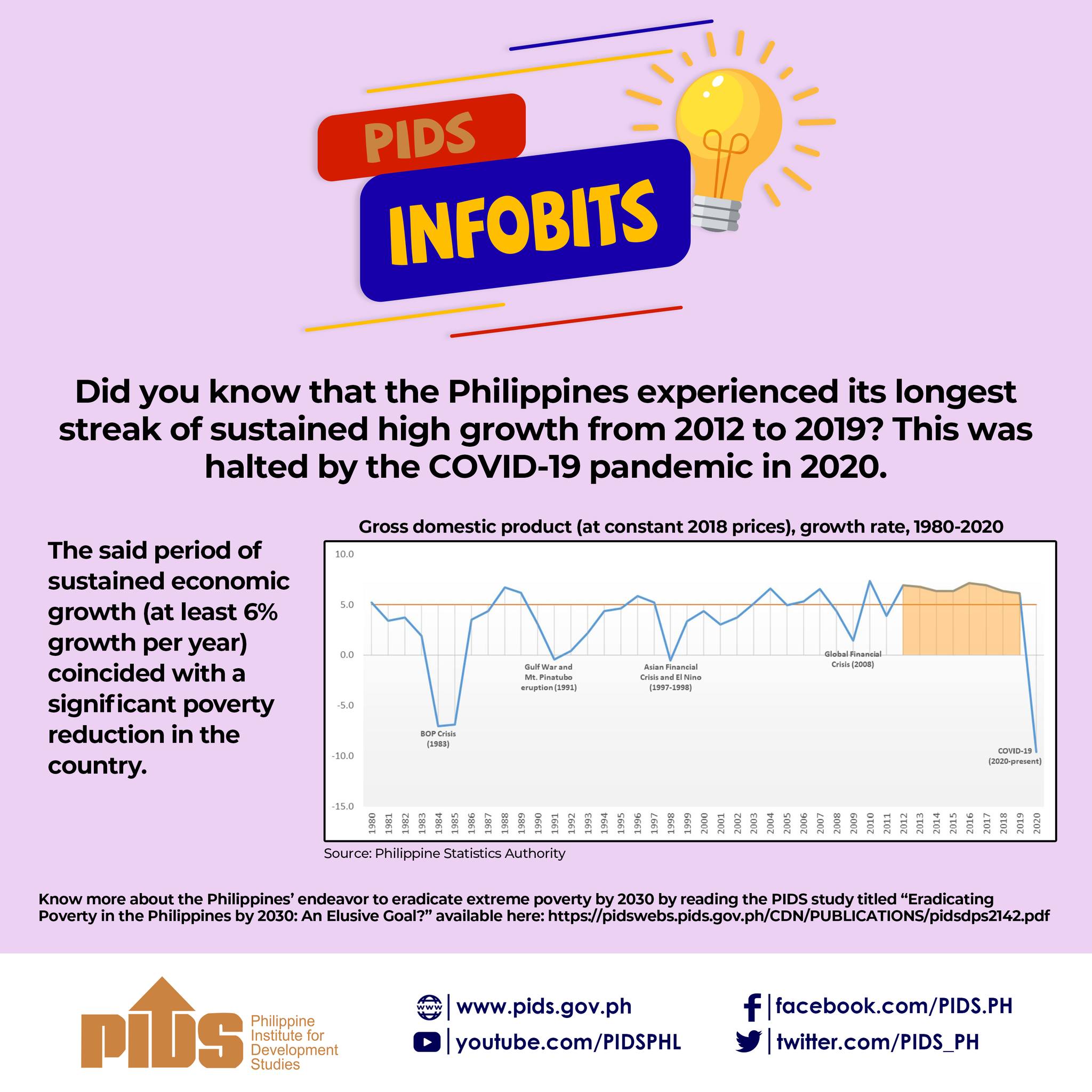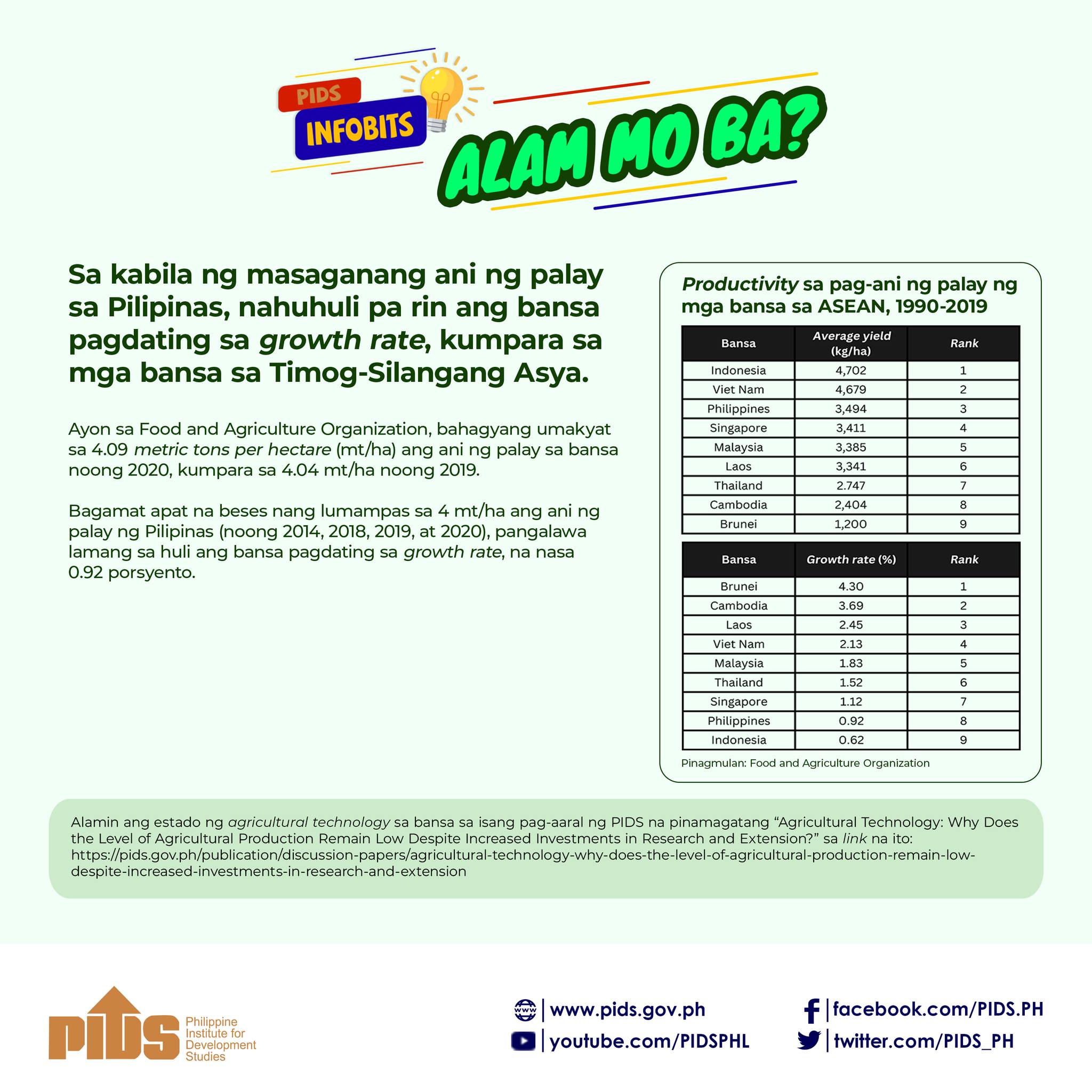THEPHILIPPINE economy is expected to continue its robust expansion this year on the back of private consumption and government spending, according to a new forecast by the Philippine Institute for Development Studies (PIDS).
Dr. Adoracion Navarro, OIC-vice president and senior research fellow at the government think tank, recently presented PIDS’ "Economic Policy Monitor 2014 and Prospects for 2015,” which projects a higher gross domestic product (GDP) growth of 6.8 percent for the Philippine in 2015 compared to 6.1 percent posted in 2014.
Navarro said growth last year was a result of certain drivers on both demand and supply sides. Growth triggers on the demand side were household consumption and net exports, but their impact was lessened by lower government consumption that pulled down growth in the third quarter.
Notably, "miscellaneous” services, referring mostly to the business process outsourcing sector, contributed the most to export service growth, said Navarro.
On the supply side, the services sector contributed the biggest share to GDP growth in 2014, with all the subsectors under it performing well.
In the industry sector, "manufacturing contributed the most to overall growth; this validates the ongoing revival of the manufacturing sector,” said Navarro. But the agricultural sector slowed, with contractions in the production of coconut and coffee.
For 2015, Navarro said the outlook faces risks, such as the decline in government revenues. This is seen to come from smaller collections by the Bureau of Customs owing to lowerPRICES OF OIL imports, as well as reduced collections by the Bureau of Internal Revenue due to the tax exemption of workers’ de minimis benefits and productivity bonuses and the higher tax exemption ceiling on the 13th month pay.
"This has serious implications on government spending for infrastructure and social services,” said Navarro.
Another is the risk of equity price shifts and capital outflows from the impact of expansionary monetary policies of advanced economies, particularly the US, Japan, and the EU region. However, Navarro believes that based on previous experiences, the Philippines is "resilient enough” to withstand financial shocks.
There is also the potential risk from the "overstretched infrastructure” as exemplified by the tight power supply, and congestion at the ports, in airports and on land.
Another unwelcome possible development is the cooling of export growth as a result of the slowdown in the economies of the Philippines’ major trading partners, the growing competitiveness of neighbors in the Association of Southeast Asian Nations (Asean) and their increasing participation in global value chains.
Weather-related risks, meanwhile, can affect farm output, such as the El Niño effect that the country is currently experiencing.
Looking beyond 2015, Navarro said the report has a positive outlook on thePHILIPPINE potential to grow at a sustained GDP rate of seven percent.
To achieve this, PIDS recommends policies that ensure the reliability of power supply and transport infrastructure systems.
Moreover, the banking sector needs to "facilitate the transmission of resources from the financial to the real sector.”
At the same time, Navarro called for taking advantage of the decline in oil prices. Although thePRICE OF OIL appears to be normalizing, "the expected ‘normal’ level is still relatively low.”
Equally important is to monitor regional and global developments, she continued. "Look at how we can participate in opportunities to join global value chains,” as well as "see how the EU deflation could lower demand for our exports, the EU being a major trade partner of thePHILIPPINES .” Philexport News and Features












